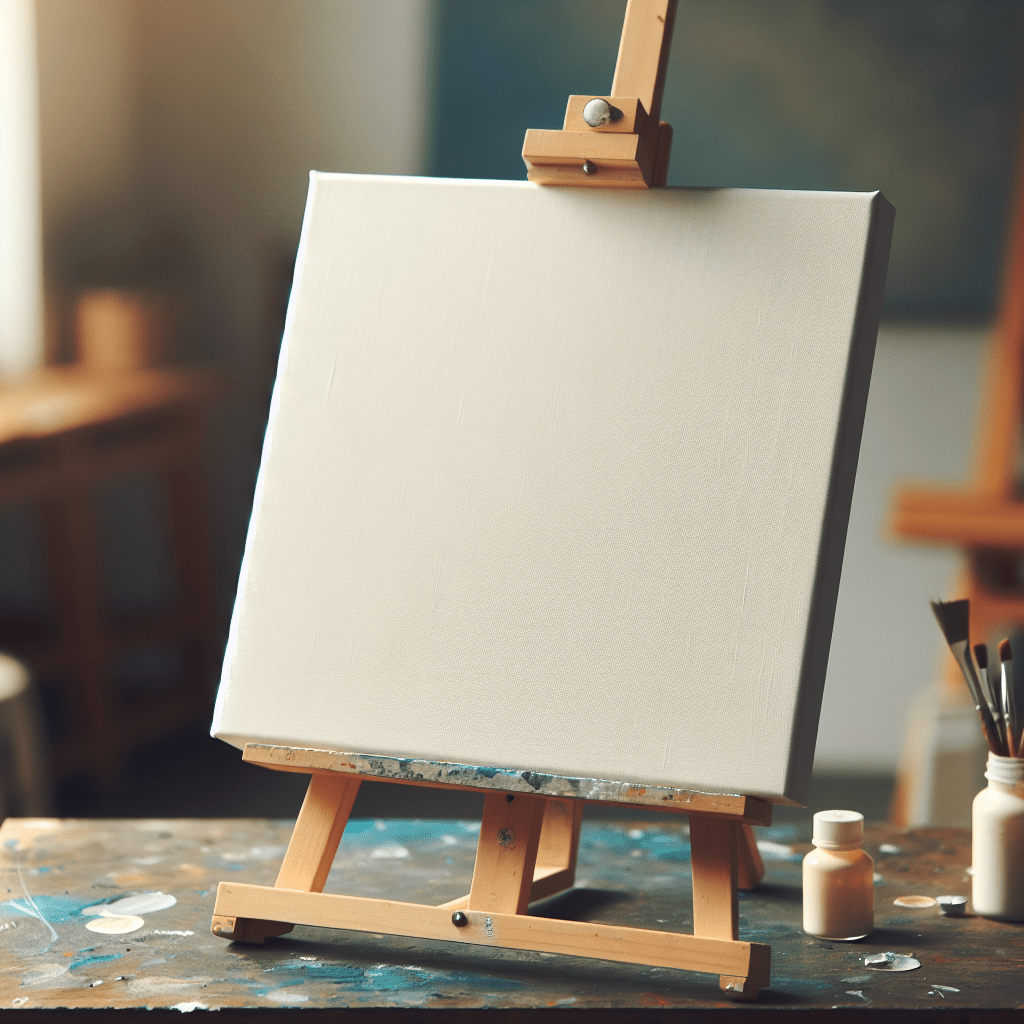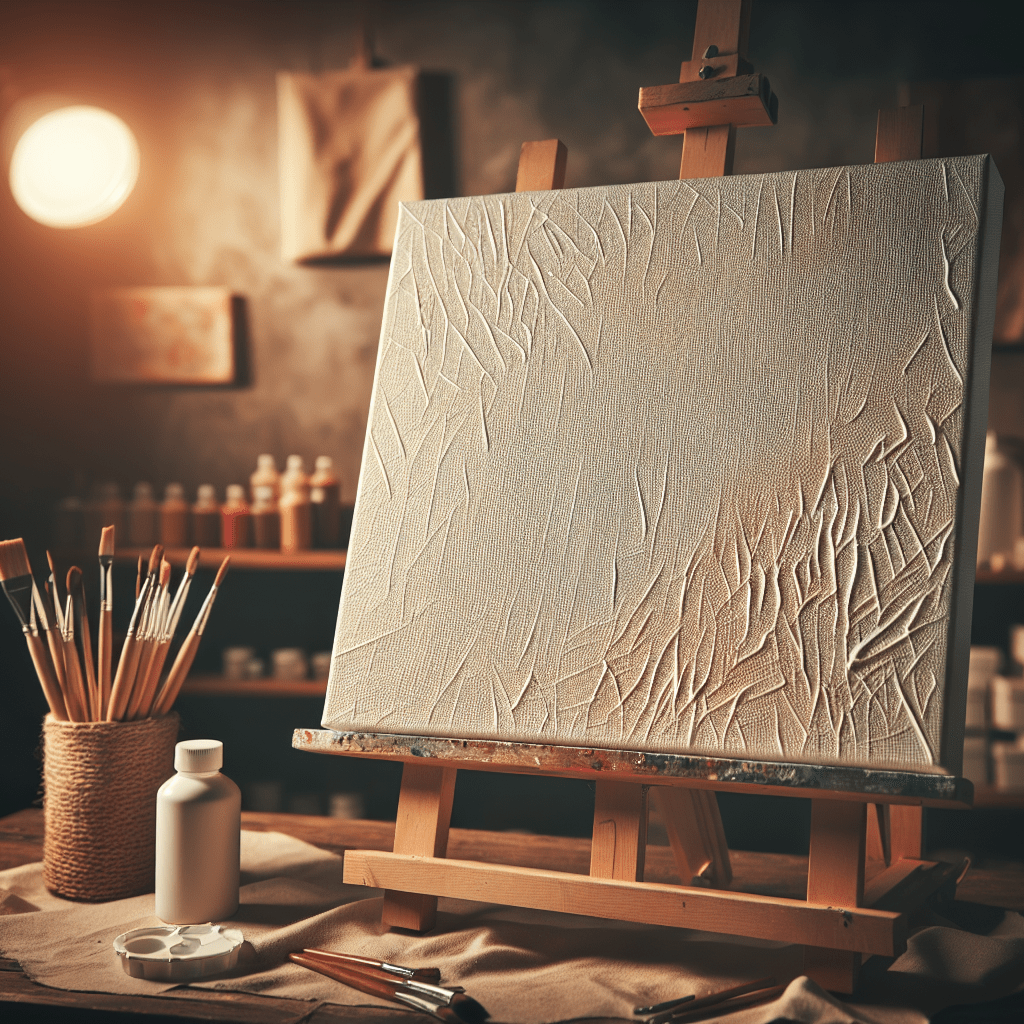Best Canvases
Embarking on the enchanting journey of paint pouring? Choosing the right canvas is crucial for your artistic success. In “The Best Canvas for Paint Pouring,” you’ll gain valuable insights to help you select the ideal canvas to enhance your creativity. This guide explores different canvas types, their unique qualities, and tips for making your artwork shine. Whether you’re a novice or an experienced artist, this guide will help you create stunning pieces on the perfect foundation. So, grab your paint and let’s start pouring!
Understanding Paint Pouring
Before we dive into the specifics of canvases, it’s essential to get a grip on what paint pouring is. Paint pouring, also known as fluid painting, involves mixing acrylic paints with a pouring medium and then pouring them onto a surface to create unique, abstract designs. The colors interact in beautiful ways, forming intricate patterns that are often difficult to achieve with traditional brush techniques.
Basic Requirements for Paint Pouring
To achieve stellar results, paint pouring demands a certain set of conditions. The paint needs to flow smoothly, and the surface must be sturdy enough to hold the paint without warping or bending. The key is balance – the canvas should not be too absorbent, nor should it be too slick. This balance helps the paint settle evenly, preserving the vividness of your colors and overall design.
Types of Canvases
The world of canvases is vast, with various types catering to different artistic needs. Let’s break down the most common options to help you decide which one suits paint pouring best.
Stretched Canvas
Stretched canvas is the most popular option for paint pouring. It consists of fabric (usually cotton or linen) stretched over a wooden frame. It is lightweight and comes in various sizes. Stretched canvases provide an excellent texture that grips the paint well and offers a smooth surface for pouring.
Pros:
- Ready to use
- Available in various sizes and shapes
- Provides a solid, stable surface for paint pouring
Cons:
- Can be more expensive
- Susceptible to warping if not stored properly
Canvas Board
Canvas boards are essentially canvas adhered to a stiff backing. They are a more affordable alternative to stretched canvases and are particularly useful for beginners or practice sessions. Canvas boards are less likely to warp compared to stretched canvases.
Pros:
- Affordable
- Easily available
- Lesser chances of warping
Cons:
- Can be challenging to frame
- May not provide the same professional finish as stretched canvases
Canvas Panels
Canvas panels are even more rigid than canvas boards and are great for artists who prefer a flat surface. These panels are made by mounting a piece of canvas onto a sturdy panel, such as MDF (Medium-Density Fiberboard).
Pros:
- Extremely sturdy
- Great for detailed work
- Often cheaper and convenient for practice
Cons:
- Difficult to frame
- Usually available in limited sizes
Canvas Paper
Canvas paper is another handy alternative, especially if you’re testing out new techniques. This type of paper mimics the texture of canvas but is lightweight and less expensive. It’s sold in pads, making it convenient for practice or experimental pieces.
Pros:
- Affordable
- Portable
- Ideal for practice
Cons:
- Not as durable
- Needs to be mounted for framing
Preparing Your Canvas
Preparing your canvas properly is crucial for achieving the best results in paint pouring. Let’s discuss some key steps to ensure your canvas is ready for action.
Priming
Most canvases come pre-primed with gesso, a white paint mixture that seals the fibers of the canvas and provides a smooth surface for painting. If your canvas isn’t pre-primed, or if you want an extra smooth surface, you can apply another layer or two of gesso.
Tools Needed for Priming:
- Gesso
- Wide, flat brush or roller
- Sandpaper (optional)
Steps for Priming:
- Apply a thin, even layer of gesso over the whole canvas.
- Allow it to dry completely (usually a few hours).
- Lightly sand the surface for an extra smooth finish, if desired.
- Apply a second coat of gesso and let it dry.
Leveling Your Canvas
Leveling your canvas is crucial in paint pouring to ensure that the paint flows evenly across the surface. Use a spirit level to check that your canvas is flat and make necessary adjustments to your working surface.
Securing the Canvas
Make sure your canvas is stable before you start pouring. If you’re working with a stretched canvas, you can use small pieces of masking tape to secure the canvas to your working table. This ensures that the canvas doesn’t move during the pour.
Techniques and Tips for Paint Pouring on Different Canvases
Having the right canvas is just the start. Let’s delve into specific techniques and tips that can help you make the most of your chosen canvas.
Pouring on Stretched Canvas
Method: Dirty Pour
A dirty pour involves layering different colors into a single cup before pouring them onto the canvas. This technique creates exciting, unpredictable results which are particularly stunning on stretched canvases.
Tip: To avoid the canvas sagging from the weight of the paint, consider placing additional support under the center.
Pouring on Canvas Board
Method: Flip Cup
The flip cup technique involves layering your paints in a cup, flipping it onto the canvas, and then lifting the cup to allow the paint to flow out. Since canvas boards are less likely to warp, this method works splendidly.
Tip: Given the rigidity of canvas boards, they’re perfect for beginners who are just getting the hang of the paint flow and movement dynamics.
Pouring on Canvas Panels
Method: Puddle Pour
In a puddle pour, each color is poured directly onto the canvas in small puddles. This technique allows the colors to bleed into each other, creating beautiful, organic designs. Canvas panels, being sturdy, will hold the weight of the paint beautifully.
Tip: Ensure your panel is perfectly flat to avoid uneven distribution of paint.
Pouring on Canvas Paper
Method: Swipe
The swipe technique involves pouring paint onto the canvas and then using a tool (like a palette knife or a piece of plastic) to swipe across the paint, merging the colors. This technique works well on canvas paper as long as it is securely taped down to prevent any movement during the process.
Tip: Always use a gentle, controlled swipe to avoid tearing the paper.

Common Issues in Paint Pouring and How to Avoid Them
Even with the right canvas, you might encounter some common issues in your paint pouring journey. Let’s go over how to sidestep these obstacles for a seamless artistic experience.
Issue: Cracking
Cracking can occur when the top layer of paint dries faster than the layers below it, causing the surface to crack.
Solution:
- Ensure your paints are mixed well with the pouring medium.
- Allow sufficient drying time between layers.
- Use a slow-drying pouring medium.
Issue: Warping
Warping happens when the canvas absorbs too much water from the paint, causing it to bend or twist.
Solution:
- Opt for sturdier canvases like canvas boards or panels.
- Make sure your canvas is pre-primed and dry.
- Use a balanced paint-to-medium ratio.
Issue: Bubbling
Bubbling occurs when air gets trapped under the paint.
Solution:
- Stir your paints slowly to avoid creating air bubbles.
- Use a torch or heat gun to pop bubbles on the surface after pouring.
- Allow the paint to settle for a few minutes before pouring to let any bubbles diminish naturally.
Issue: Uneven Drying
Uneven drying can lead to an inconsistent finish and might affect the overall look of your artwork.
Solution:
- Make sure your canvas is level before and after pouring.
- Use a consistent environment for drying, avoiding sudden temperature changes or drafts.
- Thicker layers of paint may need extended drying times.
Aftercare for Your Canvas
Once your masterpiece is done, it’s essential to take care of it properly to ensure its longevity.
Drying
Allow your painting to dry completely before moving or varnishing. Depending on the thickness of your paint layers, this can take anywhere from a few days to several weeks. Keep your canvas in a dust-free, dry area during this time.
Varnishing
Varnishing adds a protective layer to your painting, ensuring the colors remain vibrant and shielding the surface from dust and UV light.
Steps to Varnish:
- Clean the surface of your painting to remove any dust.
- Apply a thin, even layer of varnish using a wide, soft brush.
- Allow the varnish to dry completely.
- If necessary, apply additional layers for added durability and protection.
Framing and Display
Proper framing and display can enhance your artwork’s appearance and protect it from damage. For stretched canvases and canvas boards, choosing a frame can also prevent edges from fraying or chipping.
Tip: If you opt for gallery-wrapped canvases (where the canvas extends and is secured on the sides), you can display them without framing for a modern look.
Conclusion
Choosing the best canvas for paint pouring involves understanding the distinct characteristics of each type and how they interact with your artistic process. Whether you prefer the flexibility of stretched canvas, the affordability of canvas boards, the sturdiness of canvas panels, or the experimental utility of canvas paper, each option provides unique benefits and challenges.
Remember, the journey of paint pouring is as much about experimentation and discovery as it is about technique. Don’t hesitate to try different canvases and methods to find what suits your style and artistic needs best.

Happy pouring!


